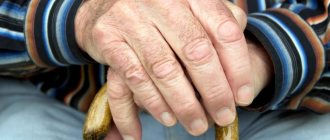Causes of self-harm
What motivates teenagers to intentionally hurt themselves?
- Self-affirmation, proof of masculinity
Self-harm is especially common among teenagers. Often young people resort to self-mutilation to assert themselves.
Teenagers gather in groups and compete to see which of them will endure the pain longer and who will cut themselves the hardest.
- To attract attention
Teenagers crave attention from peers, the opposite sex, and adults. To do this they use self-harm.
For example, if a teenager lacks parental love, he may deliberately injure himself so that his mother will take pity on him and talk to him.
Another type of self-torture is all kinds of piercings, windows, tunnels in the ears, in the cheeks, cutting of tongues, “rape” of nipples and clitoris, pumping paint into the eyes, crazy tattoos that cover the entire surface of the body, scarification.
Scarification, or scarification, is popular among connoisseurs of extreme body art. To get a clear, convex pattern, an incision is made on the skin at a certain angle. Another type of “decoration” involves cutting off strips of leather, in which case a pattern in the form of a recess is obtained.
Causes of self-harming behavior in adolescents
Unfortunately, at this age a child may periodically find himself in an unstable emotional state and may begin to harm himself. Such behavior requires maximum inclusion and empathy from the parent (i.e., understanding how the other person feels). How can you tell if your child is exhibiting signs of self-injurious behavior and what can you do?
Signs of self-harming behavior:
✔ 1. You find cuts, bruises, burns of unknown origin on the child’s body; areas without hair on the scalp may also be found. Pay attention to injuries on parts of the body where it is difficult to get hurt accidentally - wrists, hips, stomach. Please note that you should look for more than just cuts - burns, bruises, areas without hair on the head (or disappearance of eyelashes) are also signs of self-harm.
✔ 2. The teenager constantly hides his arms and legs under clothes (even in the heat) or jewelry (for example, bracelets). Scars are often hidden underneath.
✔ 3. The child begins to spend a lot of time alone in the bathroom or in his room, while desperately trying not to let the parent in and getting very angry if the parent continues to insist.
✔ 4. The child begins to spend even more time online than usual (I emphasize the word “more” - it is obvious that most teenagers spend a lot of time in front of a monitor or with a smartphone). There are communities of “interests” on the Internet, among them those that unite teenagers who are prone to self-harm. There they get a feeling of support and belonging to a group, this feeling is very important for teenagers.
✔ 5. Pay attention to the child’s clothes, bedding and towels - sometimes you can see blood stains. A teenager's sudden desire to wash all his clothes and underwear entirely on his own may also attract attention.
✔ 6. The child refuses to take part in various types of sports activities. Because there are marks and scars on the body, children with self-harm try to avoid school PE or swimming classes at all costs. And they don’t really want to change clothes in public.
✔ 7. Objects that can be used to harm yourself or eliminate the consequences of self-harm begin to disappear from the house: razor blades, knives, plasters and bandages. Some of these items may be found in a school backpack or in a child’s room.
✔8. The child often has a bad mood, a tendency to cry, reluctance to do anything, refusal to eat, or, conversely, overeating.
Mental pathologies
Self-harm may be a symptom of a mental disorder. For example, with severe depression, when a person is indifferent to everything, experiences inner emptiness, he mutilates himself in order to feel alive.
Video: the real story of a girl who cut herself
With schizophrenia, the patient may self-harm due to commanding voices in the head.
Very often, anxiety disorders and neuroses become triggers for self-harm.
Self-harm at an early age
If in adolescence self-harm can become the result of propaganda of the aesthetics of ill health and suicide, then in childhood a child cannot begin to hurt himself due to external factors. This is always an expression of his personal problems, deep and difficult problems. First of all, when a child does not trust his parents, when he believes that the whole world is against him, he begins to blame himself and only himself for everything, and subconsciously expresses this in the form of self-harm during moments of hysterics.
Excessive emotionality can appear in the form of auto-aggression, but injuries are inflicted on oneself unconsciously. For example, a child may grab his shoulders and scratch them, simply squeezing: he will not intentionally scratch, just the worse he feels, the stronger he will squeeze his hands. As a rule, self-aggression is typical for adopted children
, for children with
ADHD
and other disorders and disorders.
Where did it come from? Traditions
Until now, in some tribes far from civilization, boys undergo painful initiation rites, after which the young man is recognized as a man.
So, according to the traditions of the Brazilian Satere-Mave tribe, a boy must put his hand into a mitten with poisonous Paraponera ants, they are also called bullet ants. And endure their bites for 10 minutes, while not making a sound. The pain from the bite of even one insect is so severe that it does not stop throughout the day. After the ceremony, the boy’s hand will remain paralyzed for some time, and he himself will shake for several more days.
Video: initiation rite in a Brazilian tribe
In the famous East African Maasai tribe, a boy becomes a warrior only after a painful circumcision procedure, which is performed without anesthesia. Screaming while doing this is also considered shameful. The stitches after such an “operation” take 3-4 months to heal, and all this time the process of urination is associated with extreme pain.
In ancient African tribes, scarring was used to indicate social status, place of residence, and even belonging to a certain clan. Instead of a passport. Even now, representatives of Bodi, Suri and Mursi use such “decorations” both for men during the process of initialization, and for women as a sign of beauty and proof that they can endure childbirth. This procedure is very painful.
Selfharm is an addiction. How to get hooked on pain
It may seem that self-harm is suffering and torment. But only at first glance.
First, attention switches from emotional pain to physical pain, and it becomes easier. And then your good body will give you a “painkiller” in the form of endorphins, which cause a feeling of euphoria. But after the pain subsides and the action of the neurotransmitters ceases, all suffering returns, and in order to stop it, the person again mutilates himself. That's why many people get hooked on selfharm like a drug and can't stop cutting themselves.
Video: the story of a girl suffering from self-harm
Even now, self-torture is common in some closed Catholic orders. For example, monks wear a chain with spikes on their body or whip themselves with whips.
This is presented as pacification of the flesh or atonement for sins. But all this is hypocrisy. Firstly, because this is sublimation: attention is simply transferred from carnal desire to physical pain. Secondly, as a result of such an action, a person experiences pleasure due to the release of endorphins. Catholic clergy do not pacify, but, on the contrary, inflame the flesh.
What should a parent do if they suspect self-harmful behavior?
✔ 1. Pause, inhale and exhale. You need to calm down and think before making any decisions and taking action. Your mood needs to be taken under control, because in such a situation the range of experiences is hardly pleasant (sadness, anger, fear, guilt).
Sometimes a parent's first reaction is to ask the child questions, but this can be seen as an attack and the child will become even more closed and withdrawn. Of course, you should contact a professional, school or private psychologist, but there are some things you can do on your own.
✔ 2. Once again, let the teenager know that you love him (regardless of the specific facts of his behavior). Remember that children self-harm because they experience many difficult emotions. Regardless of whether they want to punish themselves in this way, calm them down, or simply make them feel something, their reality is very disturbing and unstable. In this constant whirlwind of emotions, they need a refuge where they can feel safe.
This is exactly what a parent should provide to a child. It doesn't matter if you can resolve your teenager's problem immediately - it's important that he knows that he is loved and accepted as a parent, and that he is not ashamed, even if the child behaves like this, covering his body with cuts and burns.
Thanks to this, emotional stability arises, which a teenager so lacks.
✔3. Try to understand the reason behind self-harm because cuts and burns are just a symptom. There are always reasons, but they can be very different - some teenagers suffer from a depressive or anxiety disorder, some have become victims of school bullying, others begin to harm themselves due to problems with teachers or with the parents themselves.
It is important that the parent helps the teenager try to understand the reasons why he harms himself, only after that can he begin to fight it.
✔ 4. Teenagers prone to self-harm are often not ready and cannot talk about this topic; when adults try to start a conversation, they remain silent. You should not force them to act in a commanding tone - this will only exacerbate existing problems. But you can think about alternative dialogue options. Here are a few options that other parents have tried:
A) Leave a notepad on the kitchen table in which the child can write any things he would like his parents to know. Writing is always easier than speaking directly. Any of the parents reads the entries every day and is aware of what is happening, where the parent can leave answers to questions or write their comments;
B) You can hang a marker board in the child’s room (or above his bed) on which the child can mark, for example, with an asterisk or a dash, every day when he did not harm himself. For every day that the damage was caused, one sign is erased by the child. This way the parent remains aware of what is happening and avoids awkward conversations with the child;
C) You can purchase a set of colored wrist bracelets (for example, rubber ones), which the teenager puts on every day, the color depends on his mood: red symbolizes extreme emotional stress, yellow - that his mood is within normal limits, green - that everything is fine . If an agreement can be reached with the school psychologist and parents cooperate with him in dealing with the child’s self-harming behavior, this is a good way for the psychologist to also be aware of the child’s condition.
✔ 5. If you have well-established contacts with the school, report the situation to the class teacher, social teacher or school psychologist, if there is one at the school. Together, it will be easier for a parent and school staff to monitor the child’s behavior; in addition, sometimes the school accommodates parents and slightly changes the conditions for conducting, for example, oral answers at the blackboard, for the child if they cause him such severe stress, that he is harming his body.
✔ 6. Don't try to force your child to stop what he is doing. Often the child in such situations continues to harm himself, but does not inform the parent about it. It is not always a good idea to “remove” all sharp objects from the apartment, for example, including table knives. Sometimes teenagers, desperate in such a situation, harm themselves in much more traumatic ways, for example, cutting their skin with glass shards. If you feel confident enough, talk to your child about how he would like you to behave in this situation. Sometimes children themselves suggest putting away all potentially dangerous objects.
✔ 7. Offer your child alternative behavior options. There are many other options that young people can try other than causing harm to their body. Some people cope with the banal beating of a pillow, tearing paper into small pieces, or the more exotic squeezing of ice cubes in their hands (yes, this is not very pleasant and very sensitive, therefore it is a good alternative to self-cutting).
Some people draw on their skin with a red pen, others wear a rubber bracelet on their wrist, which they can forcefully pull and release at a moment of emotional stress.
✔ 8. Take advantage of the help of professionals: a child psychologist in a clinic, family and children assistance centers, psychological assistance services, consultations with a teenage psychologist, etc. A psychologist can always provide support to a parent and suggest directions for behavior in a specific situation, even if the teenager himself refuses to go to an appointment.
——————————————-—
We will be happy to answer all your questions, sign up for a psychological consultation and tell you the details!
What's bad about it? I'm only hurting myself
A teenager often does not see this as a problem. He can't find a healthy way to cope with his feelings. And he is perplexed, because he does not hurt anyone, only himself.
Firstly, this is not suffering, but, on the contrary, self-exaltation and obtaining a certain pleasure through pain, the formation of dependence, and secondly, relatives still suffer when they look at this.
There are other sad consequences of self-harm:
- Wound infection. Teenagers usually don’t think about disinfecting the “tools” they use to cut themselves. And the wounds are not treated. The result is sepsis. The child dies not from self-harm as such, but from blood poisoning.
- Risk of unintentional suicide. Some go so far that they die without meaning to.
Selfharm, like alcohol and drugs, does not solve problems. It just helps you switch off from them for a little while.
The child cuts himself. 7 basic things you need to know about selfharm
About 18–30% of all teenagers have tried self-harm at least once in their lives. Most often, self-harm begins between the ages of 12 and 15 and is associated with psychological problems. Nastasya Krysko, a teenage psychologist, cognitive behavioral therapist, and host of a telegram channel about treating yourself kindly, told us the main things you need to know about self-harm in a child.
Useful Mela newsletter twice a week: Tuesday and Friday
SUBSCRIBE
Self-injurious behavior, or self-harm, is self-harm in order to cope with difficult experiences, painful memories, situations and the inability to control one's life. This could be self-inflicted cuts, burns, or blows. People from 8 years of age to old age resort to self-harmful behavior; self-harm most often occurs in adolescents.
Self-harming behavior always has some function, most often it is a way of emotional self-regulation. For example, some teenagers describe self-harm as a way to express what is difficult to articulate in words; make emotional pain physical; get rid of unbearable experiences and thoughts; regain a sense of control; escape from traumatic memories; punish yourself - for terrible behavior, feelings or thoughts; stop feeling numb; express suicidal thoughts and intentions without committing them, etc.
It is important to understand that self-harm works in a vicious circle: some situation (trigger) occurs - a negative thought arises in it, which causes negative emotions, - emotions increase - the idea of self-harm invades - self-harm occurs, which provides temporary relief. But since the problem itself has not been solved, the thoughts that negatively affect the person remain, the person falls into the “self-harm trap.”
Unhelpful phrases
It's normal to not know what to say when you see cuts on your child. Most often, we utter unhelpful phrases out of powerlessness or anxiety and do not put anything bad into them, but it is important to remember that these words can be perceived completely differently by a teenager.
- It's all in your head.
- Don't make problems out of thin air.
- Get a hold of yourself.
- Still, they manage somehow, and so should you.
- Just look at things more optimistically.
- There are so many other things in your life, but you are all about one thing.
- Stop pretending to be crazy.
- What is wrong with you?
- You should have felt better a long time ago.
- This is a teenage crisis - get over it.
For example, a teenager received a bad grade and began to think, “I’m stupid, I’m good for nothing, my parents are disappointed in me.” These thoughts influence the increase in the intensity of emotions - sadness, anxiety, anger, despair. At some point the teenager thinks: “I can’t stand this, I need to cut myself,” and cuts himself. This provides temporary relief, but since the thoughts themselves remain and there is no other way to cope with strong negative emotions, then, most likely, the teenager will often cut himself and fall into the self-harm trap.
To reduce the likelihood of a teenager causing any harm to himself, it is important to do some work: understand the mechanism of self-harm and train other safe skills to cope with strong emotions and solve problems. Drawing up a safety plan can help support your teen in stopping self-harming behavior. This plan may include the following items:
- Signals that a crisis is approaching (situations, thoughts, sensations, images)
- Ways, techniques, practices to distract yourself
- People who can distract (list of contacts: friends, relatives, whom you can call and talk to, go for a walk)
- People you can ask for support (contact list)
- Places where you can find support (where you can go for a walk to help yourself gain strength, switch gears, it should be some kind of resourceful and safe place)
- Professionals and organizations to contact during a crisis (contacts of professionals who work with your teen)
- Emergency assistance (emergency contacts: helplines, crisis chats, emergency medical services)
- Prevention: How can I make the environment safer for me?
There is a myth that teenagers use self-harm to manipulate and attract attention. Because of this myth, those who self-harm feel judged, rejected, and not taken seriously, leaving them alone with their suffering. If your teenager uses self-pharmaceuticals, do not yell at him, do not criticize him, do not ignore him, but offer to discuss what is happening to him and suggest that he contact specialists.
Useful phrases
Supportive phrases are most often aimed at conveying that the person is not alone, is not judged and is ready to help:
- You are not alone.
- I am close to you.
- You're not bad.
- I may not fully understand how you feel, but I care about you and want to help.
- You mean a lot to me, and I care about your life.
- It sounds like you are having a lot of experiences and difficulties along the way.
- I am always ready to support and help you.
- I would like to understand more about you and your condition.
- If you want, I can give advice.
- I believe that we will face these challenges together.
Take care of yourself, find support, formulate what you would like to tell your child. Try not to panic or overreact. The way you carry yourself can affect how open he or she is with you. Here are a few things that are helpful to remember:
- Try not to judge.
- Let them know you are nearby.
- Remember that a person is much more than his problem.
- Try to show empathy and understanding of the reasons for these actions.
- Offer help and support.
- Remind your teen of his strengths and the things he is good at.
- Offer to put together an algorithm of what is important to do when thoughts about self-harm arise.
- Don't discuss more than one topic with your teen in this conversation. If you suggested discussing self-harm, then in this dialogue it is important not to switch to other problems like cleaning, studying, and so on.
- As a parent, seek information and support from experts. You can read a brochure on self-harmful behavior, for example here.
- It will not help in dialogue with a teenager who uses self-harm, but will only increase his alienation and closedness: criticism, accusation, shaming, devaluation, ignoring injuries or, conversely, focusing too much on them, using violence.
Supporting a child using selfharm can be a challenging and long journey, with ups and downs. Self-care as a parent becomes an important skill that we will rely on when supporting a teenager:
- Remind yourself that change is not linear and takes time.
- Find out what types of help and support are available.
- Request and receive the support and information you need for yourself.
- You can also seek support from specialists.
Self-harmful behavior requires supportive work aimed at strengthening the skills of awareness, stress resistance, emotional self-regulation, self-care, and effective communication. At the moment, dialectical behavioral therapy has a high proven effectiveness in chronic suicidal and self-harmful behavior, including in adolescents.
On April 14–16, Nastasya Krysko participated in the International Scientific and Practical Conference “Teenager in a Megacity: Inequality and Opportunities,” where psychologists and teachers discussed the main problems of modern high school students: from physicality and psychophysiology to digital socialization and gadgets.
Illustrations: Kira Illarionova for “Mel”
Illustration: Kira Illarionova
What to do if a teenager hurts himself
First of all, you need to contact a surgeon. He will treat the wounds and apply stitches if necessary. Long-term antibiotic treatment will also be required to prevent sepsis.
In the future, be sure to consult a psychiatrist. The doctor will detect or rule out pathology and, if necessary, prescribe treatment. In severe cases, drug therapy will be required.
But even if the teenager does not have a mental disorder, work with a psychologist or psychotherapist is necessary. The specialist will teach you how to cope with difficult situations and emotions, stand out among your peers and attract the attention of the opposite sex in healthy ways.











